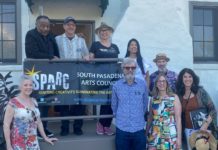
At long last, it’s over.
After decades of study, debate and legal battles, mostly between the cities of South Pasadena and Alhambra, the 710 Freeway extension plan is “finally dead” declared State Senator Anthony Portantino during a press conference in Pasadena on Wednesday.
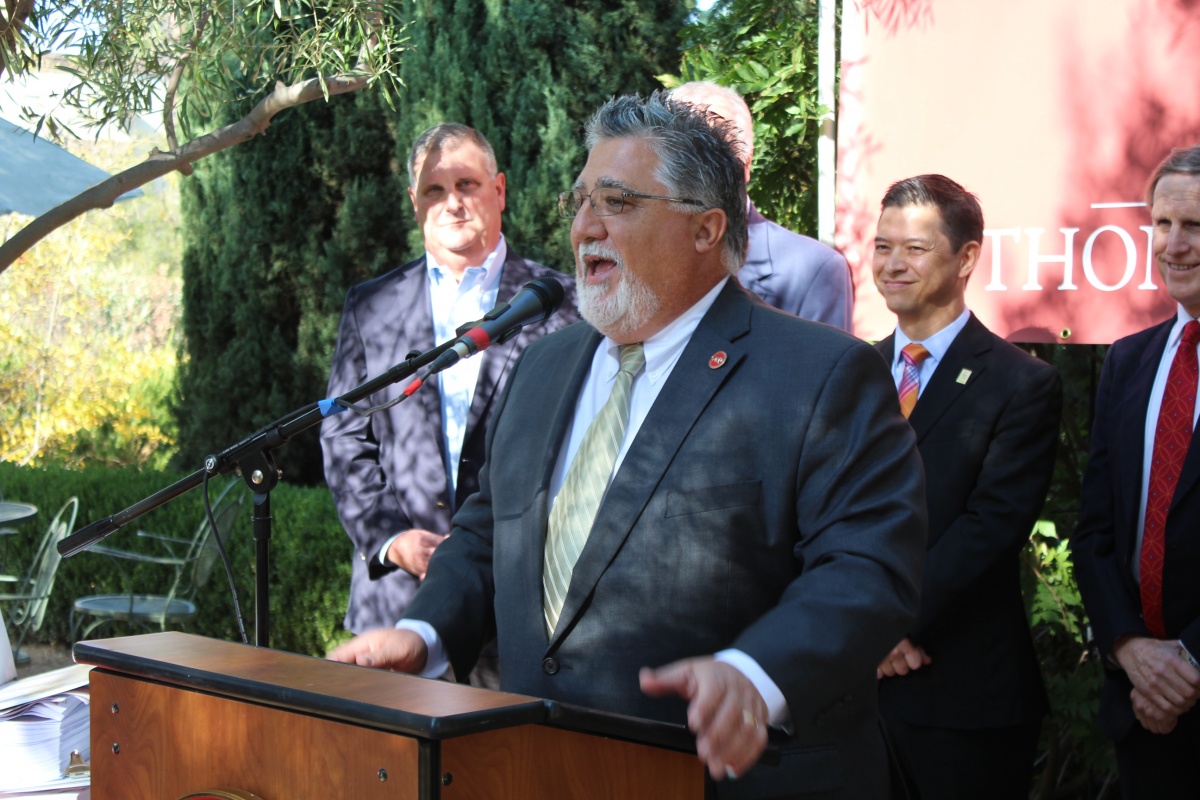
California Secretary of transportation Brian Annis and Portantino presented the final Environmental Impact Report (EIR) during the hour-long session at Arlington Gardens, a beautiful outdoor setting once in the path of the proposed surface route for a freeway that has been on the books since 1947, according to South Pasadena Mayor Dr. Richard Schneider, when the city officially objected to the extension of the freeway.

Portantino said the signed and adopted EIR formally adopts a local street improvement alternative to the multibillion-dollar 8-lane tunnel proposed 15 years ago to replace an underground route. In addition, Caltrans has selected the preferred alternative over a tunnel for the State Route 710 North Project, as it has become known in recent years and approved the environmental document. The alternative calls for improvements to the efficiency and capacity of the existing transportation network in the region. The multi-modal approach addresses transit connectivity, pedestrian and bicycle access throughout the San Gabriel Valley.
Other alternatives considered by Caltrans were bus rapid transit, a light rail system and a “no build” or do nothing option. “Caltrans has worked very closely with regional partners at Metro, SCAG, and cities as well as elected officials and community groups to find the best solution for relieving congestion in the San Gabriel Valley and across the Los Angeles region,” said Caltrans District 7 Director John Bulinski.
The freeway proposal extension, mainly between the two neighboring cities was triggered back during the Eisenhower administration.
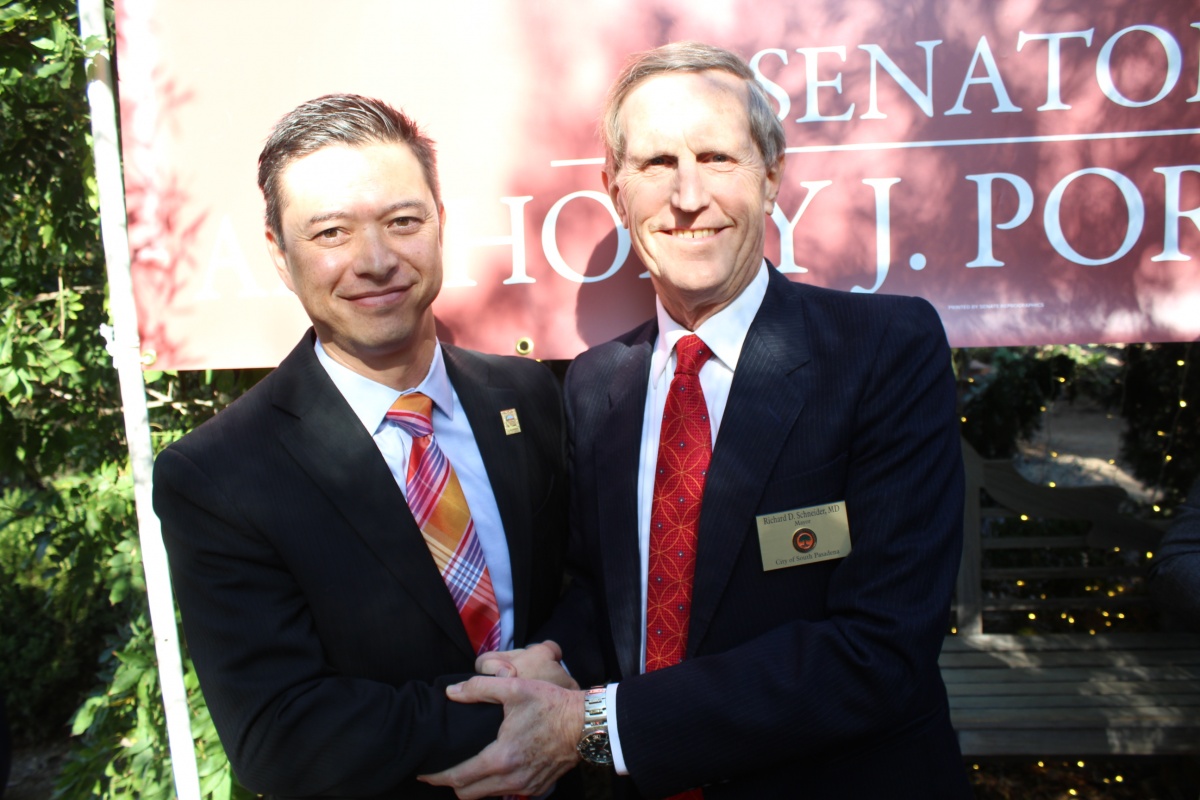
“Yes, the freeway discussion goes back six decades,” said Portantino. “All of us owe a great deal to those early activists who taught us many of the life lessons we use in our everyday lives today and who are responsible for where we are today.”
Over that a span, South Pasadena and Alhambra were on opposite sides of the freeway argument. On Wednesday, Schneider and Alhambra Mayor Jeff Maloney were together shaking hands, welcoming the EIR in an effort to collaboratively solve the transportation needs of each city.

“For the City of South Pasadena, this is a great relief,” said Schneider. “I want to thank Alhambra for their change in position. I really want to provide an open door to the City of South Pasadena so the City of Alhambra and South Pasadena can become good friends, work together, just like we do with Pasadena.”
While Mahoney said the city he represents supported the 710 Freeway extension, noting there was a lot of disappointment in his camp when Metro a year ago opted to pursue another option.
“But we are grown ups,” said Mahoney. “We are concerned community members and the goal of all the cities in the corridor has always been to preserve the quality of life of the residents and to really address the traffic issues. We recognize this is the way forward now and are looking forward to cooperating in this post-tunnel 710 era, not only with our corridor partners – Pasadena, South Pas, the cities to the north, as well as the cities to south, and all the affected thoroughfares through the region.”
During the past 20 years, coalitions from both sides of the issue, have bitterly disputed, spending millions in the legal fight, one city supporting the freeway extension, the other not.
In 2017, the Metropolitan Transportation Authority (MTA) voted for local alternatives to the freeway and Wednesday’s action by Portantino and Annis formalized it. “Completion of this environmental document allows important local road and transit improvements to move forward, and for Caltrans to proceed to expeditiously sell residential properties the state has owned for many decades,” said Annis.
Caltrans purchased nearly 500 pieces of land decades ago believing they would need the space to extend the 710 Freeway, which ends at a stub just outside Alhambra city limits at Valley Boulevard. The transportation agency has already begun to sell some of the homes that people have been renting from the states for decades.
Proponents of the extension, looking to get gridlock off Alhambra surface streets, favored the idea of extending the freeway to the 210/134 interchange in Pasadena.
Now that the freeway extension is not going happen, legislation will be introduced in Sacramento next week to sell off the properties. “As the tunnel is no longer a viable option and Caltrans will soon be selling its properties, I will be introducing a bill on Monday, the first day of our new session,” said Portantino, “to help facilitate the sale of properties leased by he non-profits in the corridor, formally removing the 710 tunnel from the streets highway code and leaving open necessary language need by the cities and MTA in regard to the stub and the disposition of surplus property.”
The focus for transportation officials will now be on making street improvements and public transportation.
Wednesday’s announcement was a day many thought never come about, making it even more monumental for those fighting it for so long.
“It’s a celebration for the freeway’s death,” said longtime South Pasadena 710 Freeway fighter Joanne Nuckols. “While we’re agreeing the freeway is dead, it’s not buried yet. I think the legislation that Anthony [Portantino] is introducing on Monday will be the burial. We’re grateful to him for all the work he has done. We needed someone as focused and determined as him to end this once and for all.”
On hand for Wednesday’s news conference were elected officials, MTA board members, freeway activists, Caltrans tenants and local community members.
“Today, we formally end the tunnel conversation and conflict,” Portantino told the gathering. “The EIR is certified and it’s a new day – with new friends – and a new direction.”






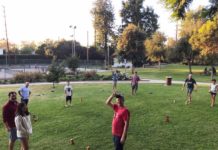
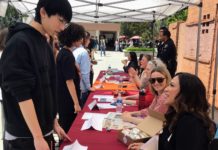







.png)








